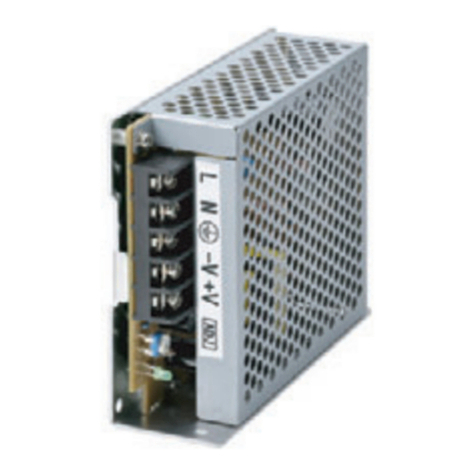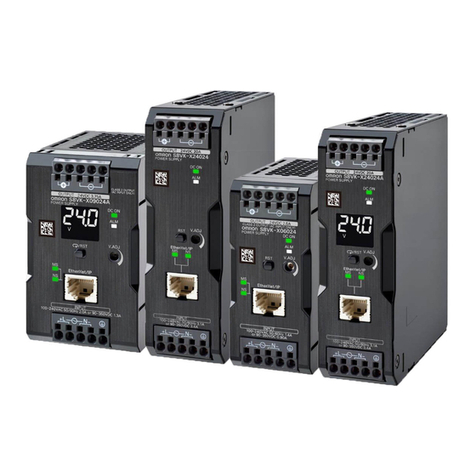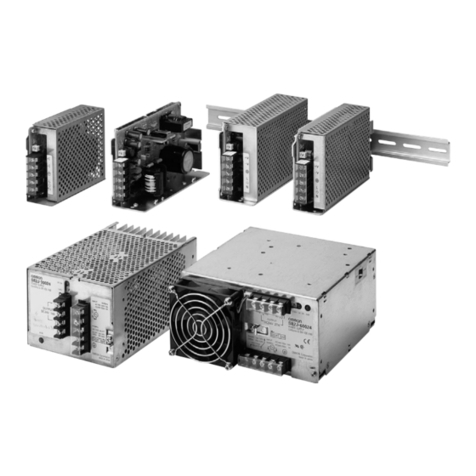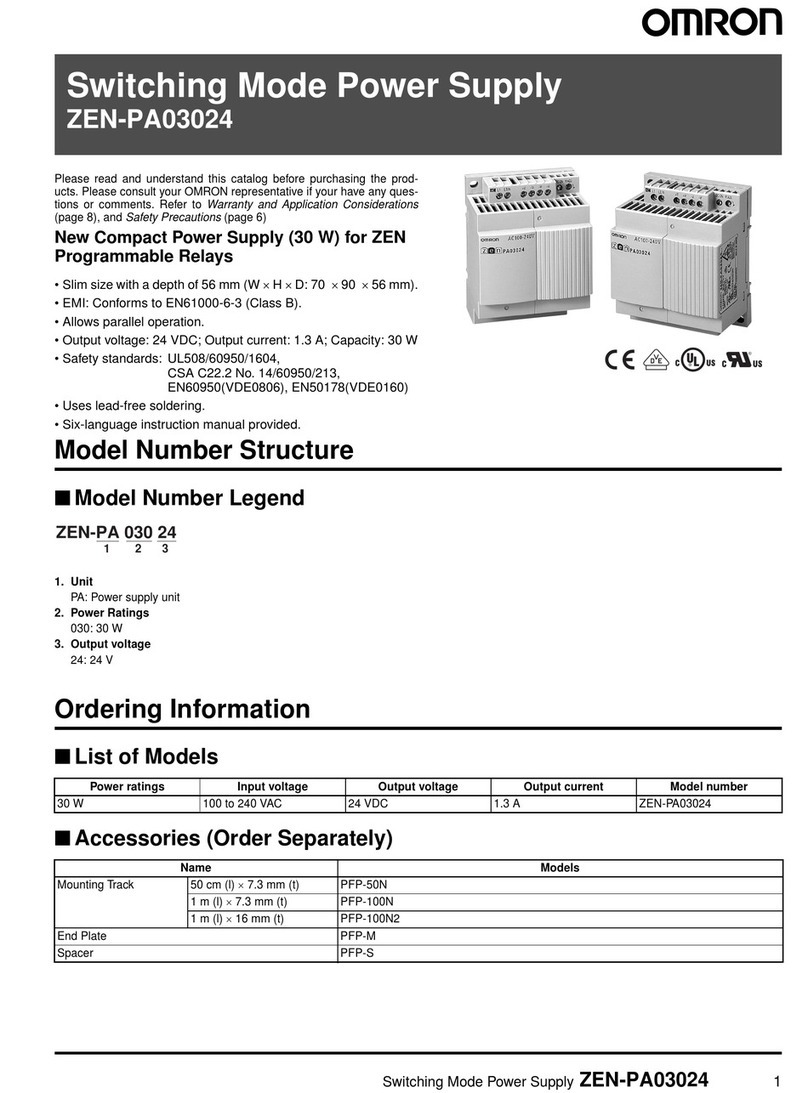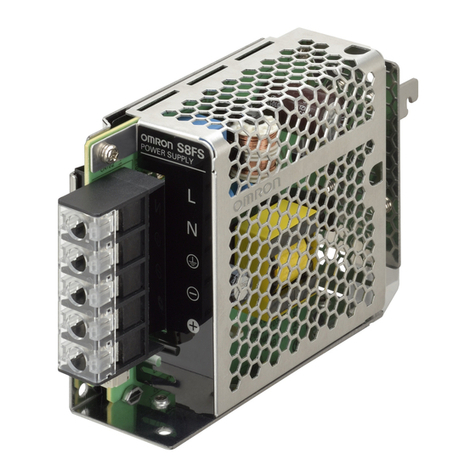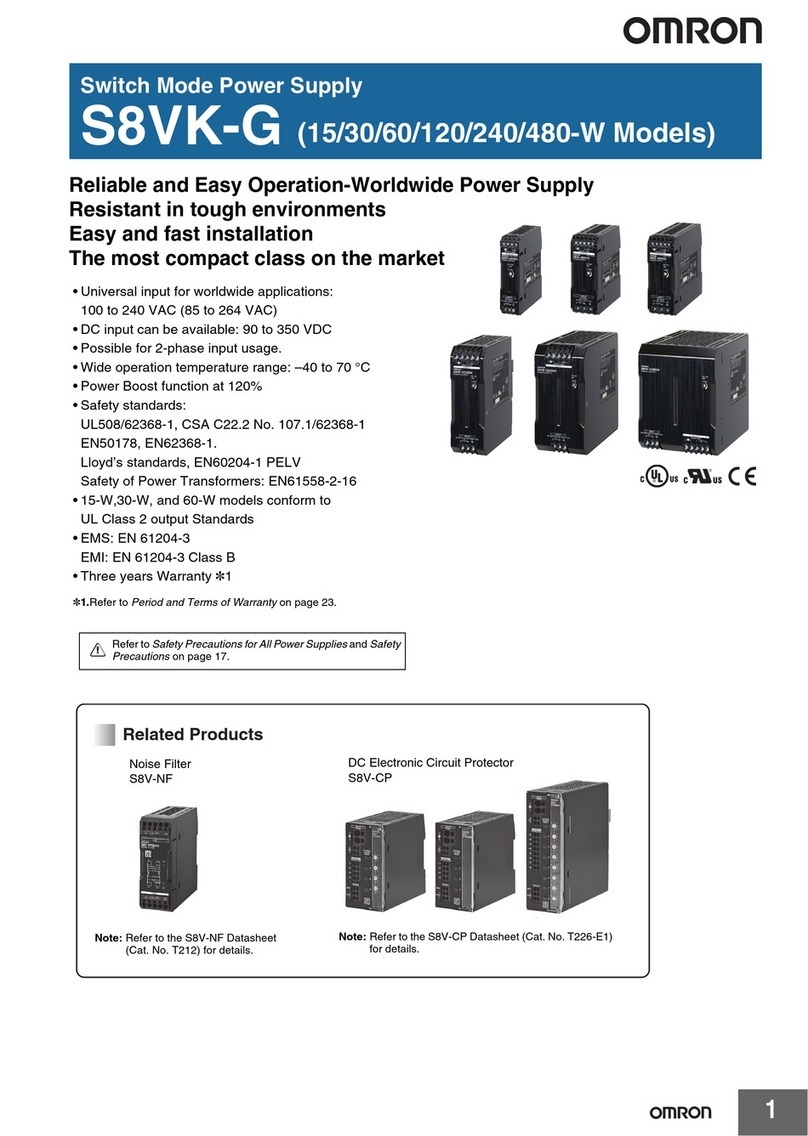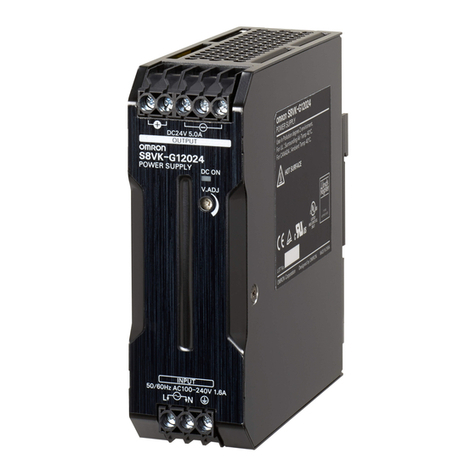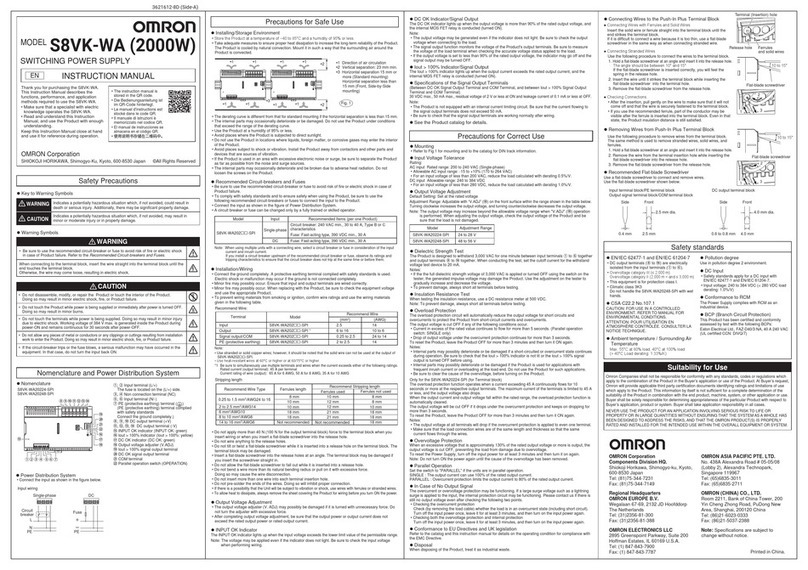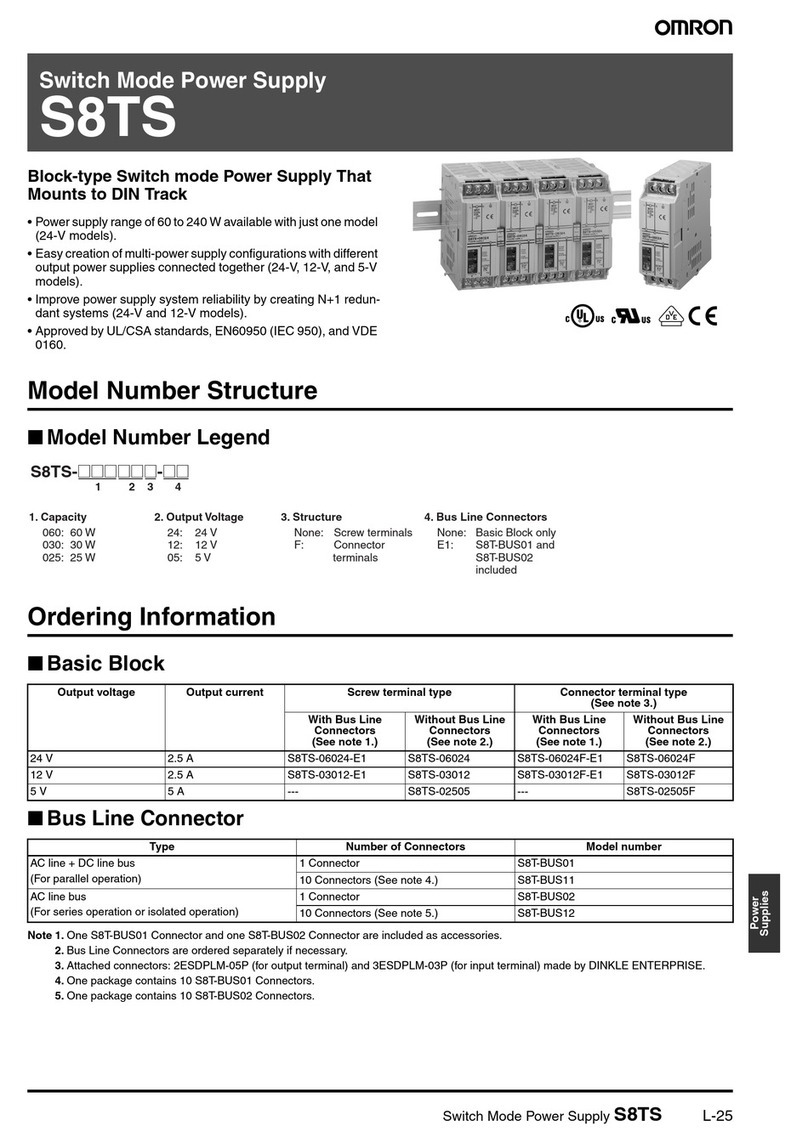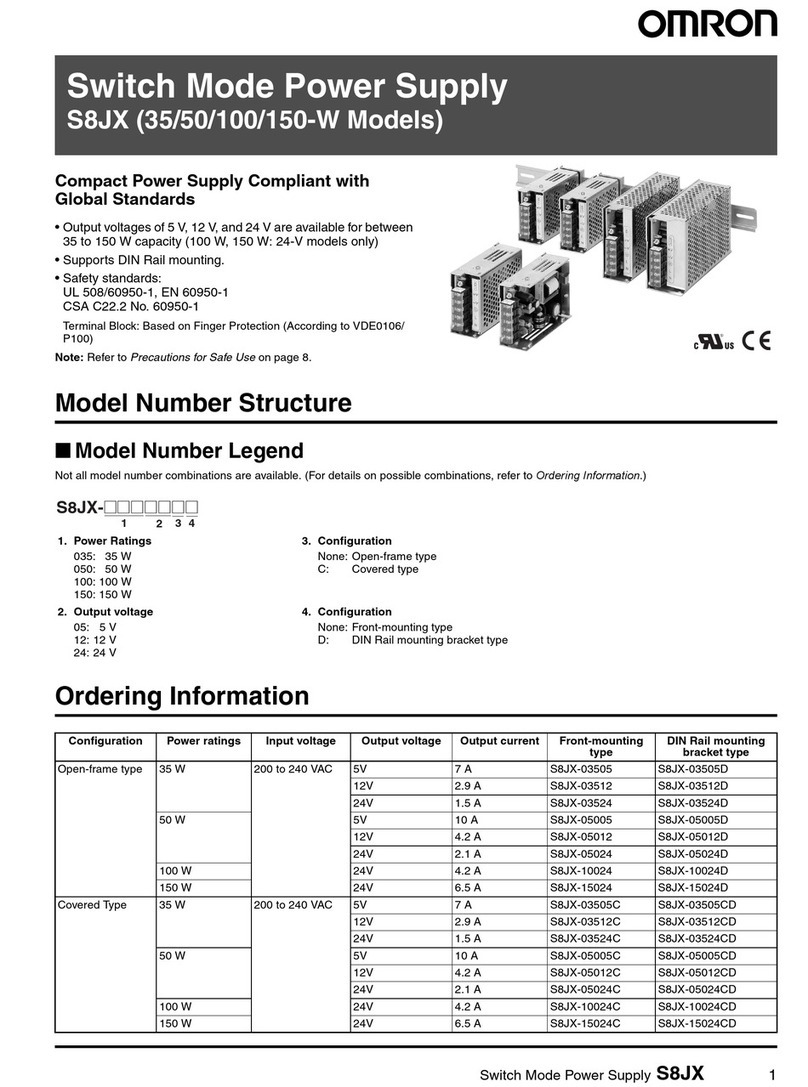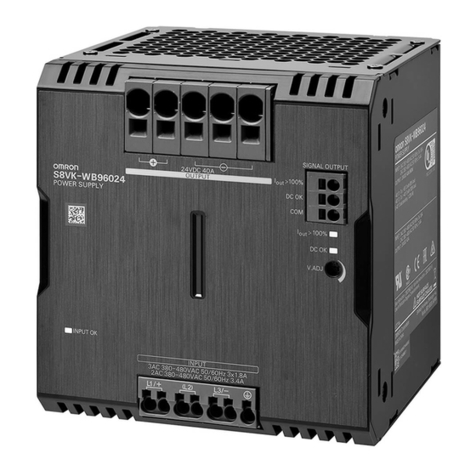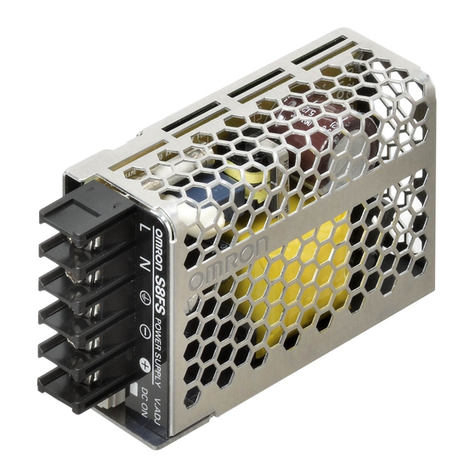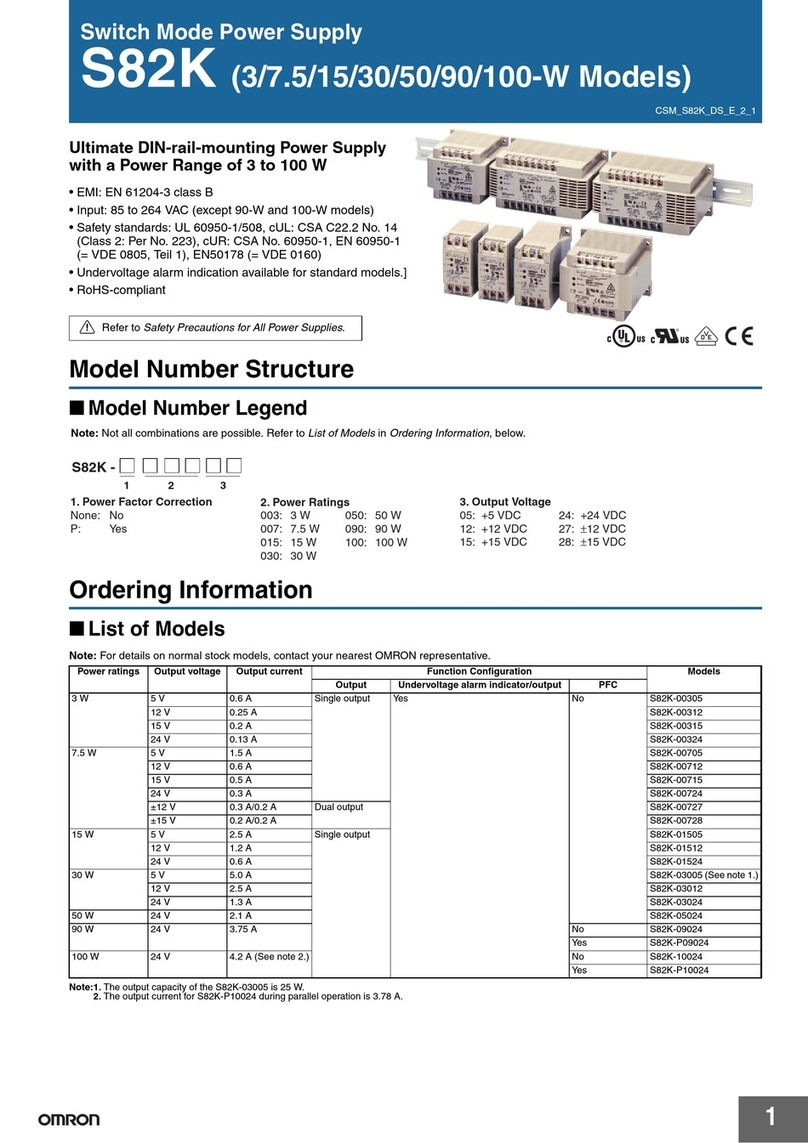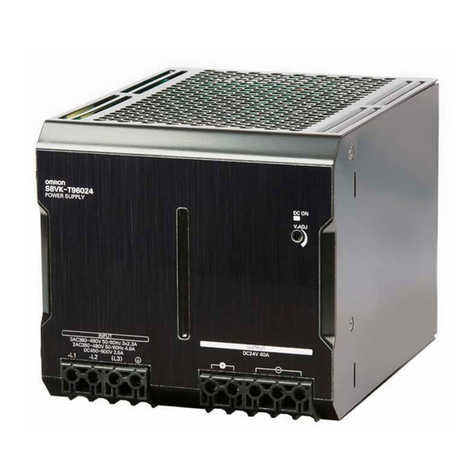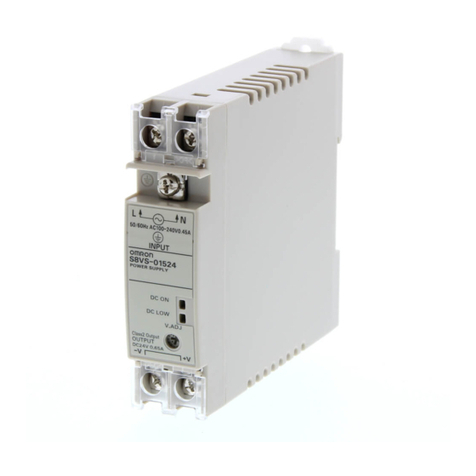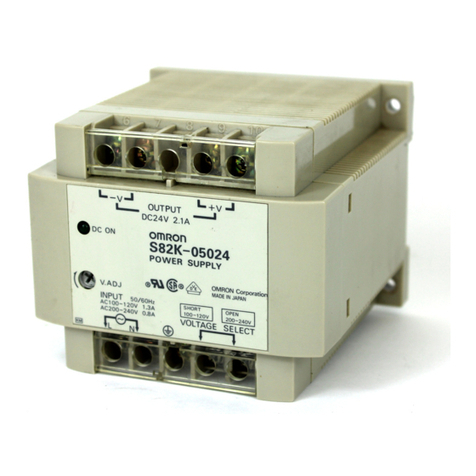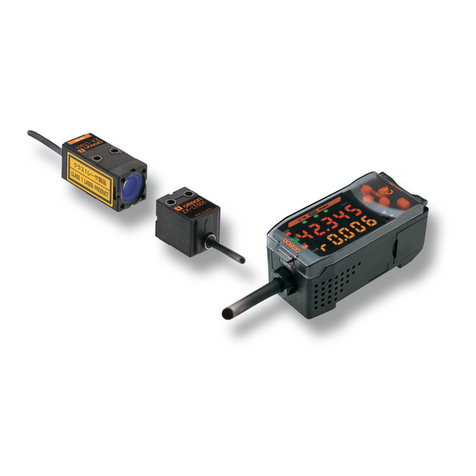
8
S8T-DCBU-01 S8T-DCBU-01
Functions
Charge Voltage Selector Switch
The battery charge voltage can be
selected from 27.4 V and 26.2 V by the
charge voltage selector switch.
The default setting is 27.4 V.
The charge voltage recommended by the
battery manufacturer is 27.4 V, so
recommend using the battery at 27.4 V.
At this voltage, the charge voltage of 27.4
VDC sometimes is output momentarily
when backup operation is switched to
depending on the status of the connected
load.
Note: When charging the battery at 26.2 V, the battery capacity
decreases and the backup time is shortened gradually as
shown in the table below at each discharge cycle.
Overvoltage Protective Circuit
When the charge voltage exceeds about 30 V, the charge voltage
is cut off to prevent battery overcurrent resulting from overvoltage.
Reset method
Reset the S8T-DCBU-01 by the following procedure after making
sure that no problems will occur as a result of stopping power to
connected loads.
1. Turn OFF the power of battery holder.
2. Turn OFF the S8TS-06024
AC power line.
3. One minute or more has elapsed.
4. Turn ON the power of battery holder.
5. Turn ON the S8TS-06024
AC power line again.
Note: 1. Be sure to eliminate the cause of the trouble before
turning ON the S8TS-06024AC power line again.
2. As an AC input OFF status is the same as a power
failure, the S8T-DCBU-01 will perform backup
operation. Sometimes charging cannot be performed
for the required backup time as the battery is not
sufficiently charged. For this reason, first make sure
that backup operation is not needed before turning the
battery holder switch and then the AC input OFF.
3. The time that the S8T-DCBU-01 must be left for
resetting is the time specified when five S8TS-06024
Basic Blocks are connected, the S8T-DCBU-01 is in a
no-load state and the battery is fully charged.
Overcurrent Protection Function Selector Switch
The overcurrent protection function can
be selected from 5.7 A (typical) and 11.7
A (typical) by the overcurrent protection
function selector switch during backup
operation. When one or two S8TS-
06024Basic Blocks are connected (3
Blocks if an N + 1 redundant system is
used), set the current to 5.7 A (typical).
When three or four S8TS-06024Basic
Blocks are connected (5 Blocks if an N +
1 redundant system is used), set the
current to 11.7 A (typical). The default
setting is 5.7 A (typical).
Overcurrent Protection Function
Normal operation
The overcurrent status is notified as follows:
• LED lit (Battery status indicator (BAT LOW: Red))
• Relay (Battery status output (BAT LOW)) (4)-(5): ON
If a power failure occurs in one of these states, the overcurrent
protection function is activated, and backup operation is not
performed.
Backup operation
The overcurrent protection function can be selected from 5.7 A
(typical) and 11.7 A (typical) by the overcurrent protection function
selector switch. Output is cut when the overcurrent protection
function is activated.
Note: Continued use of the S8T-DCBU-01 in an overcurrent
state will cause internal elements to deteriorate and may
result in breakage.
Overdischarge Protection Function
When the voltage at the Battery Connector terminal reaches about
18.5 V, backup operation is stopped to prevent battery
overdischarge.
Backup ON/OFF Input Function
Backup operation is possible when the backup ON/OFF input
terminal is shorted, and not possible when the terminal is open.
The system used is no-voltage input, and the shorted/open status
is specified by the following table.
Before shipment, the backup ON/OFF input terminal is shorted by
a short bar.
The operator is notified that backup operation is not possible as
follows when the backup ON/OFF input terminal is open:
• LED lit (Battery status indicator (BAT LOW: Red))
• Relay (Battery status output (BAT LOW)) (4)-(5): ON
Battery Misconnection Protection Function
When the voltage on the Battery Connector terminal is about 15.5
V or less when the S8T-DCBU-01 is started up, the charging circuit
is disconnected. This protects the battery and main unit when the
battery is incorrectly connected (+ and −polarities are incorrectly
connected, only one 12 V battery is connected, etc.).
The operator is notified of an abnormality as follows when the
battery misconnection protection function is activated:
• LED lit (Battery status indicator (BAT LOW: Red))
• Relay (Battery status output (BAT LOW)) (4)-(5): ON
Capacity reduction at each
discharge cycle
25ºC environment 10% reduction (reference value)
0ºC environment 20% reduction (reference value)
Terminal
block cover
Overcurrent protection
function selector switch
Section A
Charge voltage selector switch
Charge voltage selector switch
Enlarged View of
Section A
Shorted Impedance: 1 kΩmax.
Current discharge at 0Ω: Approx. 2 mA
Residual voltage: 1 V max.
Open Impedance: 400 kΩmin.
Overcurrent protection
function selector switch
Enlarged View of
Section A
